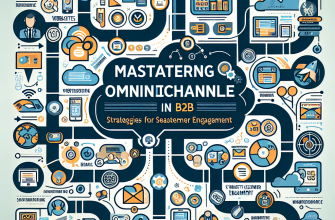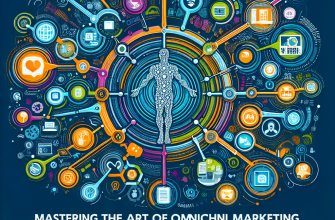Mastering Omnichannel Marketing: A Comprehensive Guide with Real-World Examples
In the ever-evolving landscape of digital marketing, the concept of omnichannel marketing has emerged as a cornerstone for businesses aiming to provide a seamless customer experience. As a digital marketing expert, I’ve witnessed firsthand the transformative power of a well-executed omnichannel strategy. This comprehensive guide, enriched with real-world examples, aims to demystify the process and offer actionable insights for businesses looking to master omnichannel marketing.
Understanding Omnichannel Marketing
At its core, omnichannel marketing refers to the practice of creating a cohesive customer experience across multiple platforms and touchpoints. Unlike multichannel marketing, which simply means having a presence on more than one platform, omnichannel marketing requires these platforms to be interconnected and consistent, ensuring a seamless transition for the customer as they move from one channel to another.
The Importance of a Customer-Centric Approach
The key to successful omnichannel marketing lies in a profound understanding of your customer. It’s about anticipating their needs, preferences, and behaviors across all channels. This customer-centric approach ensures that every interaction is personalized and relevant, thereby enhancing the customer experience and fostering loyalty.
Real-World Examples of Omnichannel Success
Several brands have set benchmarks in omnichannel marketing, offering valuable lessons for businesses across sectors.
-
Disney’s MagicBand Experience: Disney’s MagicBand is a prime example of omnichannel innovation. The wristband acts as a hotel room key, photo storage device for any pictures taken with Disney characters, and a payment method throughout the park. The MagicBand syncs with the Disney app, where visitors can plan their visit, select FastPasses, and more. This seamless integration of physical and digital touchpoints enhances the visitor experience at every step.
- Starbucks’ Reward Program: Starbucks has mastered the art of omnichannel retailing with its rewards program. Customers can reload their card via phone, website, or in-store, and any changes are updated across all channels in real time. This convenience factor, coupled with personalized offers based on purchase history, exemplifies omnichannel marketing’s potential to create a cohesive and engaging customer journey.
Strategies for Omnichannel Mastery
Achieving omnichannel success requires a strategic approach, grounded in a deep understanding of your audience and a commitment to consistency across channels. Here are some strategies to consider:
-
Data Integration: Centralizing customer data from all touchpoints is crucial. This unified view enables you to deliver personalized experiences and consistent messaging across channels.
-
Channel Optimization: Not all channels are created equal. Identify the channels most frequented by your target audience and focus on optimizing those. Remember, the goal is to be where your customers are, offering them value and convenience.
-
Consistent Branding: Ensure that your brand’s voice, messaging, and visual identity are consistent across all platforms. This consistency reinforces brand recognition and trust.
-
Technology Investment: Leveraging the right technology stack is vital for omnichannel success. From CRM systems to marketing automation tools, the right technology can streamline processes, facilitate data integration, and enhance customer interactions.
- Continuous Improvement: Omnichannel marketing is not a set-it-and-forget-it strategy. Continuously gather feedback, analyze performance data, and iterate on your approach. The digital landscape and customer expectations are always evolving, and so should your strategy.
The Road Ahead
As we look to the future, the importance of omnichannel marketing will only continue to grow. Advancements in technology, such as AI and machine learning, offer exciting possibilities for further personalization and efficiency in omnichannel strategies. However, the heart of omnichannel marketing remains the customer experience.
Businesses that prioritize their customers, invest in understanding their journey, and commit to delivering a seamless experience across all touchpoints will thrive in the competitive digital marketplace. The real-world examples highlighted in this guide serve as inspiration, but the true potential of omnichannel marketing lies in its adaptability to your unique business context and objectives.
In summary, mastering omnichannel marketing is an ongoing journey, not a destination. It requires a blend of strategic foresight, technological investment, and, above all, a relentless focus on the customer. By embracing these principles and learning from the successes of others, businesses can navigate the complexities of the digital world and emerge as leaders in the omnichannel era.

A seasoned digital marketing strategist with over 8 years of experience across various areas of digital marketing, including SEO, SMM, PPC, content marketing, and email marketing. Specializes in transforming B2B, B2C, e-commerce, and SaaS businesses by creating effective go-to-market strategies and building thriving digital ecosystems. Known for a data-driven approach to optimizing campaigns and maximizing results.
“If your business is looking to scale or in need of a fresh perspective, feel free to contact”.





